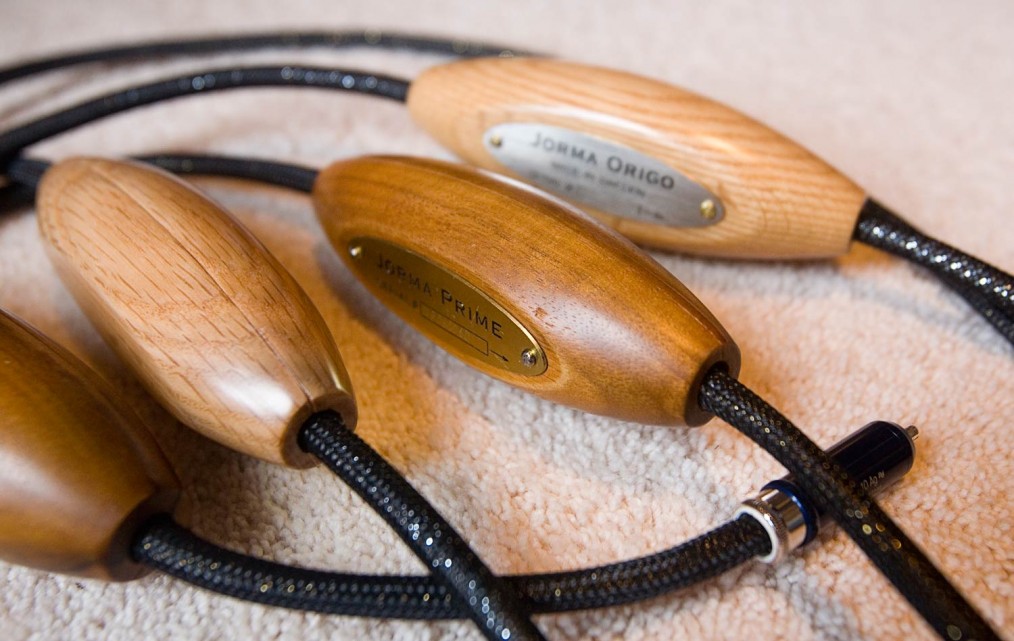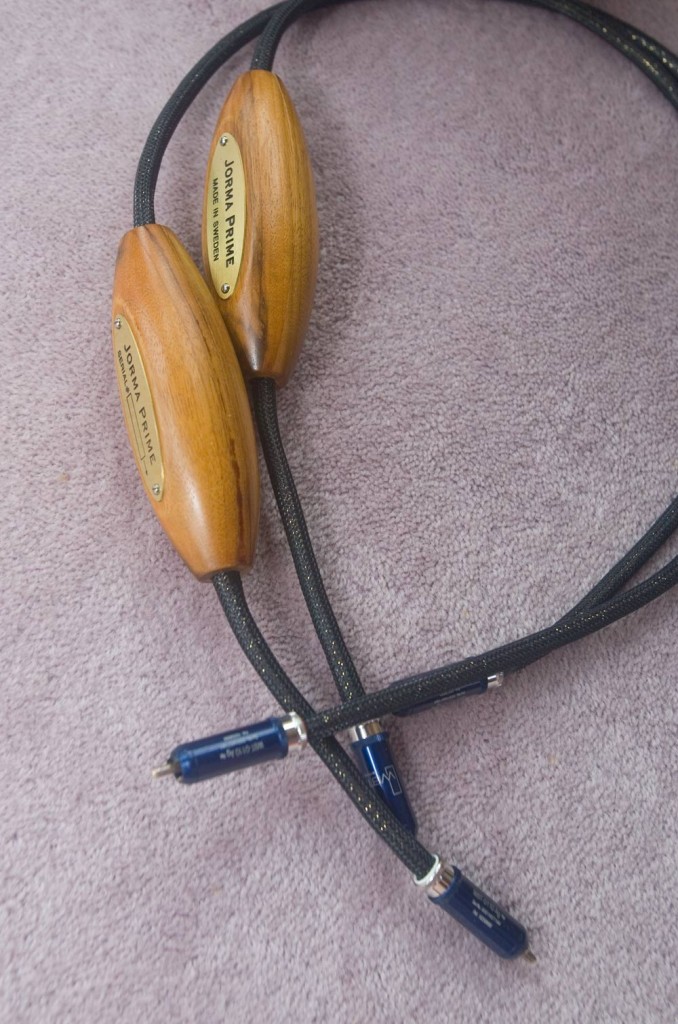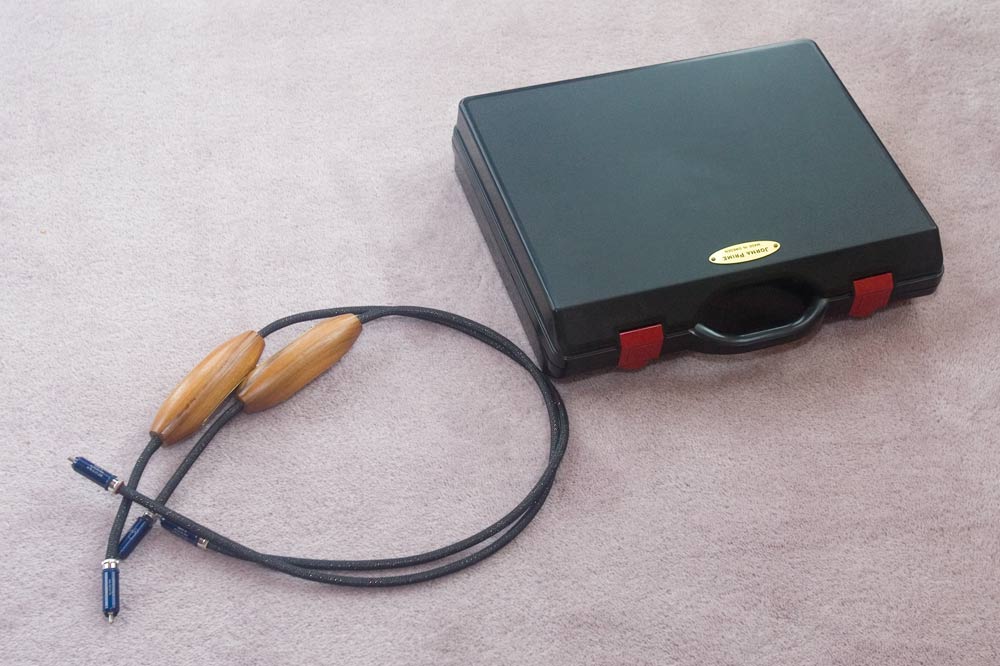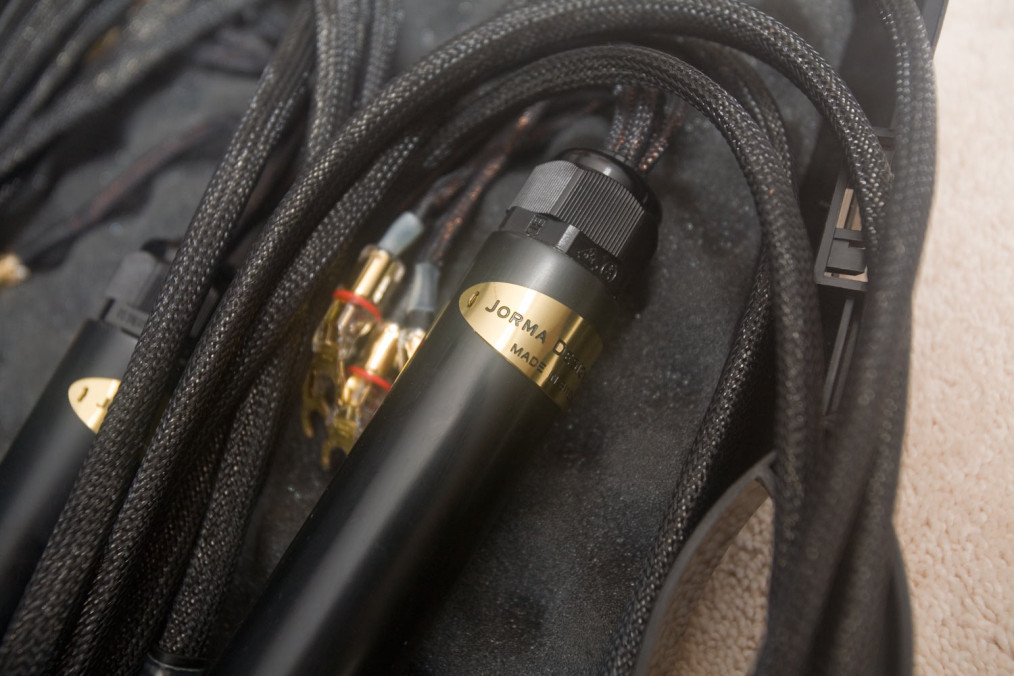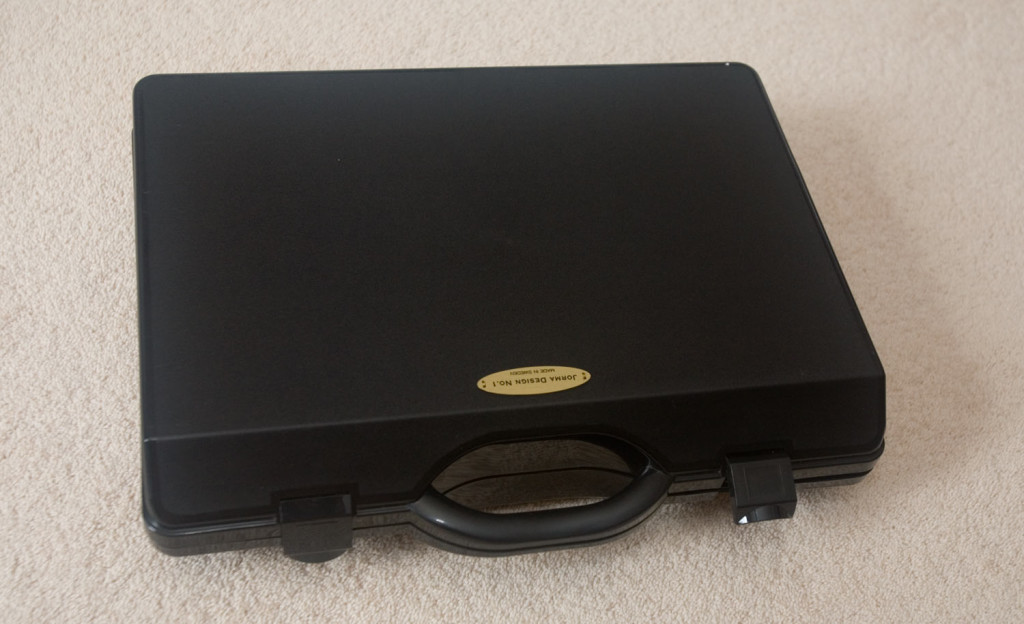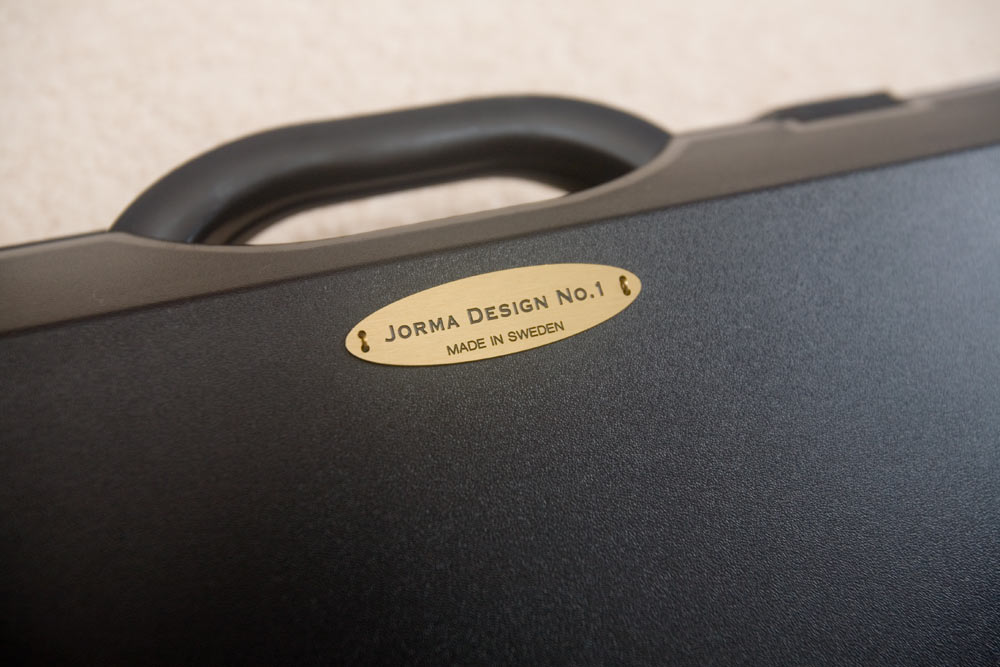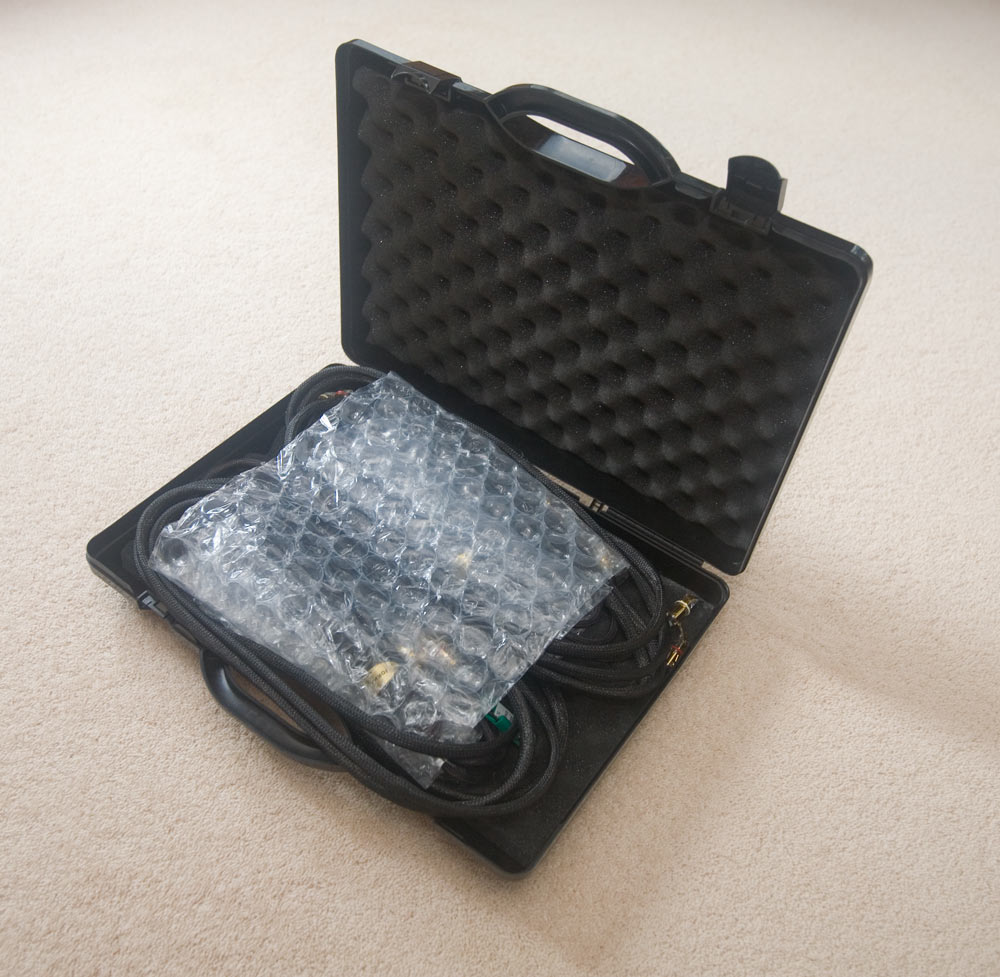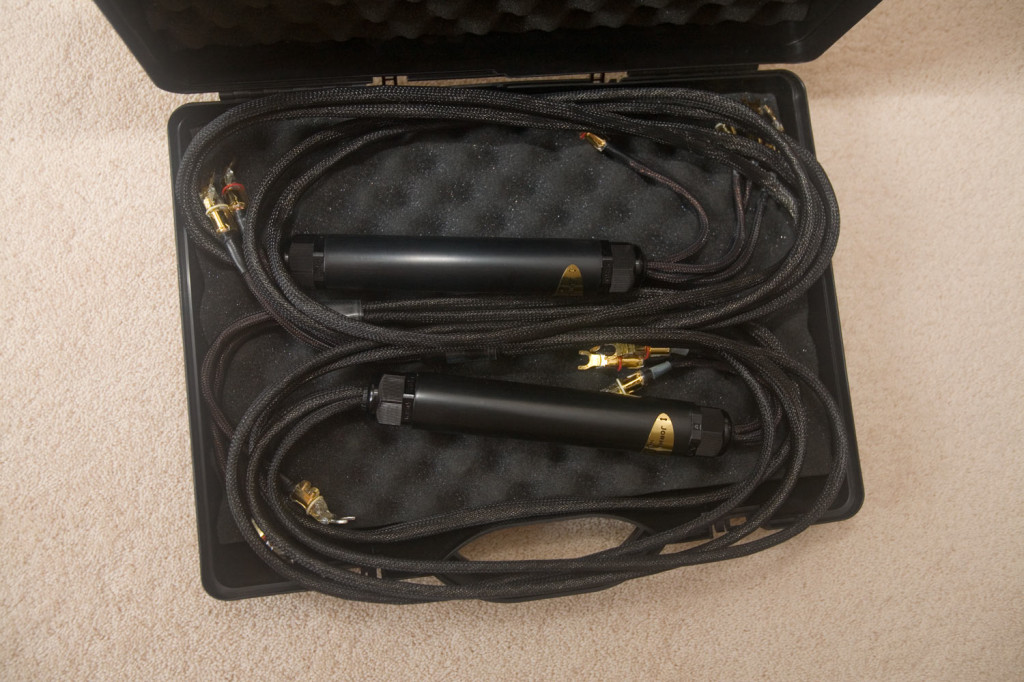
Marten Coltrane speakers, Audio Note Ongaku integrated amp, EMM Labs XDS1 CD / SACD player, Jorma Prime speaker cables [and sometimes integrconnect) and Nordost Odin interconnect and power cords, Elrod power cord, HRS amp stands.
SOUND
The sound was very high resolution, very clean, very harmonically rich and very pure.
OK.
Done with the ‘very’ies. But keep them in mind because they do describe and define the core of this system’s sound.
The sound was filling the room and we had good room pressurization going on. The bass was present and fairly well-dampened and we did not have significant problems with room nodes. The sound was quite musical, if not quite riveting [by Wednesday it would have been riveting :-)]. Frequency response and dynamics were even-handed top to bottom [a little less authority on the bottom, this is a relatively small speaker], a natural amount of micro-dynamics, a natural amount of separation [notes perfectly separated but still part of the whole]….
This system handled complex music just about as well as it handled simple notes – there was no sense of added confusion as the music transitioned from simple harmonies into complex harmonies [complex passages in better recordings do resolve better, however].
Similarly, the high resolution and harmonic detail – and our willingness to play opera attacted a number of people with their opera CDs. The voices, instead of sounding shrill as they often do when there is not enough resolution or harmonic color – were wonderfully involving and hypnotizing.
I talked about playing rock and roll in the last post, and I could now talk about how each component [and we always include cables and cords in these discussion as if they were components] handles its responsibilties in the musical chain – but because each component did its job so very well, I think it might be hard for everybody to believe that each component is really as important as every other component. So we will move on to the next post [Uh, I am writing this section last, sorry] where it will become obvious what happens when a piece or two does NOT do its job.
ISSUES
I promised to talk about the 3 1/2 days of breakin of the Marten ‘Coltrane’ speakers.
The LACK of being broken in had several clearly audible signatures:
1. Brightness and sibilance in the treble (the occurrence of this was reduced to about half, say, by the 3rd day)
2. A stiff, unrelaxed sound, all-too-quick decays, ‘cold’ kind of sound (this was much improved by the 3rd day – but this is an asymptotic kind of break in, taking months to get to 95% and always getting better and better the more it is played)
3. A rare ‘tizz’ in the low treble that sounds like a metal bee got caught in the speaker (this was gone by the 3rd day. Whew!)
4. Exaggerated percussive transients that makes things like symbols and drum whacks etc. more prominent than normal (here this is caused by #2, above [which happens for all speakers] but #4 is somewhat more prominent on ceramic driver speakers. Again, the longer the speaker is played, the more natural this becomes) [this aberration is very prominent on several horn speakers (not Acapella BTW) and never seems to go away (or maybe, of the dozens of different versions of these speakers – I have never heard a broken-in pair)]
What did we do? What we did (besides fret and worry) was to
1) play an ocean waves disc at night, and the louder we played it at night the more it seemed to have improved by morning.
2) play Whos Next quite loud. Later Aerosmith Toys in the Attic. These [I think both were the SACDS versions] have lots of detail – revelatory for me, like the 1st time hearing the SACD version of the Moody Blues albums. Lots of energy in the treble – helped the speakers get to the next plateau
3) Tried to keep the volume down to a reasonable level. This was almost impossible [we tried to do the Lamm room thing, keeping things mellow, but I guess our hearts just weren’t in it]. We invite everybody to play their own CDs, and most want to hear them at a specific volume: loud. We rarely went past 4 [which was quite loud], out of 10, on the Ongaku – this system CAN go LOUD.
Mike Latvis did convince innocent ole me 🙂 to turn the volume up to 5.5 on Bela Fleck (track 4 on the CD) and the bass on that track was pretty darn impressive [not sure how else to describe it] at that volume. Let’s just say that the Ongaku drove those [89dB] speakers to very high SPL, controlling each note perfectly from birth to death, without straining.
4) We pointed the speakers down at the seated listeners. It was determined early on that this helped reduce the negative effects of un-broken in tweeters. Usually this hardly matters and we point the speakers midway between a standing person’s ears and a seated person’s ears [more or less]
5) Worry and fret.
——————————————
Like I said in the previous post, we were happy with the result. However, this happiness is somewhat the result of coming to a realization about how stupid and foolish we were to expect miracles from a more-or-less brand new speaker – and being relieved that we were able to navigate the treacherous waters of un-broken-in-hood lane and come out the other side alive.
SETUP:
After much advice and after many different positions we finally placed the speakers about 2.5 feet from the front walls and facing almost perfectly straight ahead.
The 2.5 feet was Neli’s idea. I thought that they should go closer to the front wall, Martens like that, but the draperies were absorbing way too much energy and generating a dull confused presentation. We pulled them out another 1/2 inch on Saturday morning – the breaking in was loosening up the speakers and causing it to interact negatively again with the drapes [maybe. But it did sound better after that 1/2 inch move].
The straight ahead idea was mine, sort of. Somebody pointed out that the soundstage was still kind of narrow, and I remembered how we used to set these speakers up straight ahead sometimes. The final test was to sit in the chairs left and right of center, in the front row, which were almost directly in front of one of the speakers, and see if there was a soundstage – see if whether the speaker right in front of us would disappear or not. It did.
We put the paper posters on both sides of the room at the 1st reflection point (for most seats) and that added about 5% more clarity to the separation etc.
The 13x19feet room is much easier to setup than the big 19×30? [I think the audiofest website is wrong] rooms. Optimally I would like a 16 x 25 room, I think, for shows. Easy to setup and fill with music but with a lot of seating.

